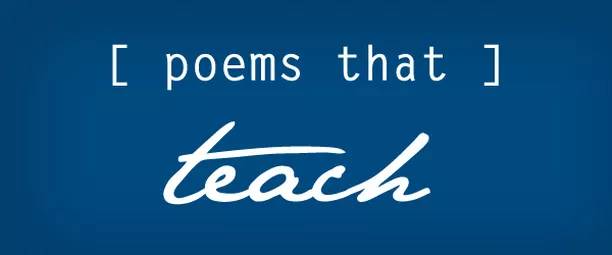Poems That Teach: Tenebrae by R.A. Villanueva

Sonnets can be intimidating for new poets, but interest in the classic form is alive and well. Tyehimba Jess filled his Pulitzer-winning Olio with sonnets—syncopated sonnets, a crown of sonnets, sideways siamese sonnets; Hanif Willis-Abdurraqib’s title poem in The Crown Aint Worth Much is a broken crown of sonnets; and of course, Patricia Smith’s “A Motown Crown” sets a standard for contemporary sonneteers.
There’s a reason the form has stuck around. If you’re looking to push yourself, stretch your poetic muscles, the sonnet is a good choice, and once you’ve entered the arena of form, new shapes and architectures will draw themselves to you one after the other: villanelles, pantoums, sestinas, etc. Hopefully, you’ll join the ranks of poets pushing the sonnet forward, as Gerald Stern did with his American Sonnets. We’ll be brief here, and hopefully useful, as we explore how a poet writes a sonnet in our reading of “Tenebrae” by R.A. Villanueva.
Tenebrae
Shame the light for what grief it brings
the eye, even shut: radiant
the slaughterhouse; phosphorous shellsbright, fed on bone and wedding sweets.
Damn the light—damn the glow of their
sirens, their liturgy of flagto kerosene, torch to altar
and crossbeam. Praise instead the night,
its starless, basilica void.Praise the black of ventricles, new
blood. Praise his holy ruckus and
jolt—this boy as echo, shadow,
high-relief. Glory be his mouth,
warm on the soft dark of her breast.
We agree with Ed Hirsch when he defines a sonnet as any fourteen line poem with a turn in it. No matter the particular definition though, the sonneteer must begin by confronting a series of poetic decisions:
- How will the poet deal with the rhyme scheme?
- How will the poet deal with the meter?
- How will the poet deal with the word choice?
- How will the poet deal with line breaks and enjambment?
- How will the poet deal with the volta or the turn?
As a poet, you’ll likely be making these choices through a combination of deliberate decision and being pulled along by the poem itself. We can’t say exactly what R.A. was thinking, but as we look closely at “Tenebrae”, you may see where and how these choices were made.
Immediately into our reading we can tell we are dealing with a sonnet setting itself in tension against formal tradition. We’ve got four stanzas instead of the usual three, with one five line stanza holding down the tail of the sonnet.
Every sonnet written is haunted by Shakespeare and Petrarch—two men who tailored the form to be handed down through tradition—so every break from their respective forms (rhyme scheme, stanza breaks, volta location, etc.) creates dialogue, haunting and invisible, with the tradition they represent: overwhelmingly white, overwhelmingly male, and overwhelmingly cis-gender. Some poems can find fierce energy in that dialogue and tension, like Wanda Coleman’s American Sonnets. Every sonnet makes some sort of claim against or into tradition, so the most affective sonnets happen when the poet makes that claim as a deliberate choice.
The choice of rhyme in “Tenebrae” does not fit tradition either. It does away with any scheme whatsoever, though it still remains a sonically satisfying poem. R.A. chooses his end words just as carefully as he would if he were aiming for rhymes. He fills the line-endings with solid nouns for nine of the lines, a couple of adjectives, a pronoun, a conjunction. “Tenebrae” has sonic weight with those nouns, beautiful words that stand out from each other—shells, altar, void / flag, breast, shadow—in both image and sound. When considering enjambment and rhyme, the decision of those end-words can craft the weight and sonic message of a poem as a whole.
R.A. also makes interesting decisions with the meter here. A usual sonnet carries itself with iambic pentameter: five feet of two syllables each, one unstressed / one stressed. Listen to “Tenebrae”: “Shame the light for what grief it brings”. Eight syllables, four feet, with stresses on Shame, light, grief, brings. This shortened line adds urgency, a sense of throng and crowd that pushes the images up one against the other, especially as he slips in the occasional spondee or extra stress: “the slaughterhouse; phosphorous shells/ bright, fed on bone and wedding sweets.” R.A.’s language pushes at these metrical limits with those long, beautiful words grabbing so much syllabic real estate.
The poem is tense, cramped, ready to catch fire from the friction of imagery and meter until R.A. pulls us out with the volta in line 10, “Praise the night,/ its starless, basilica void,” and we can breathe. The stresses find some room in the line. We’re ready for that turn as it arrives, ready to take in the “new blood,” and the sensuous infant mouth on “the soft dark of her breast.”
“Tenebrae” is a successful sonnet because of careful attention and deliberate choice. R.A. skillfully exhibits what sets apart any professional from the amateur: the knowledge of the terrain and the boldness to risk oneself upon its edges.
R. A. Villanueva’s debut collection of poetry, Reliquaria (Prairie Schooner Book Prize in Poetry)(U. Nebraska Press, 2014), won the Prairie Schooner Book Prize. New writing appears or is forthcoming in Poetry, The American Poetry Review, Prac Crit (UK), and widely elsewhere. He lives in Brooklyn and London. http://caesura.nu/
“Tenebrae” was originally published in Guernica